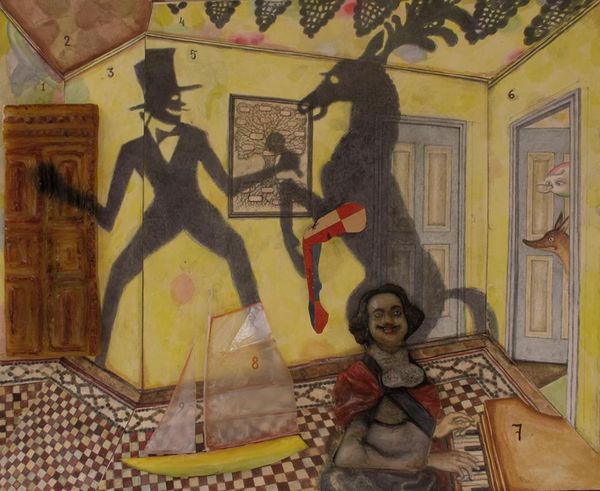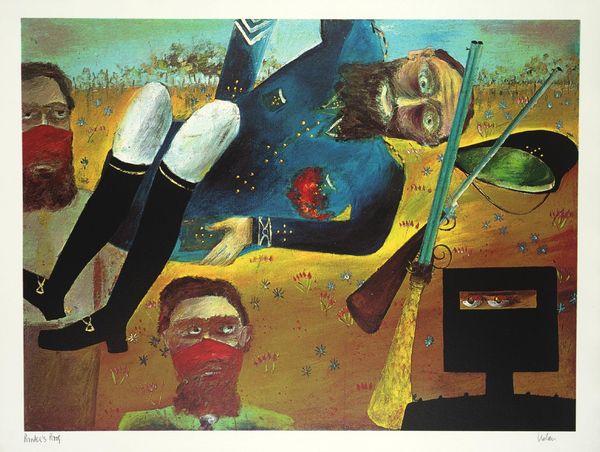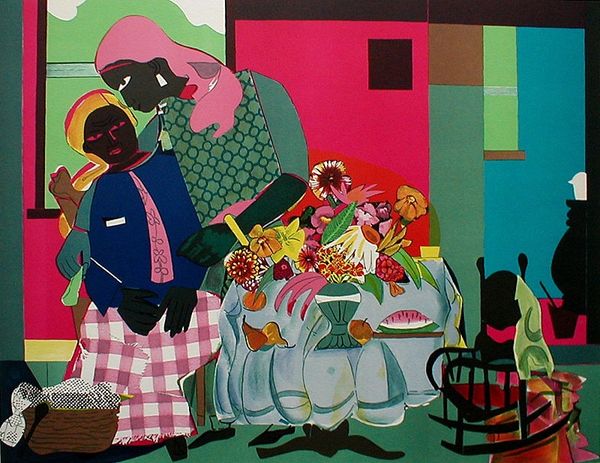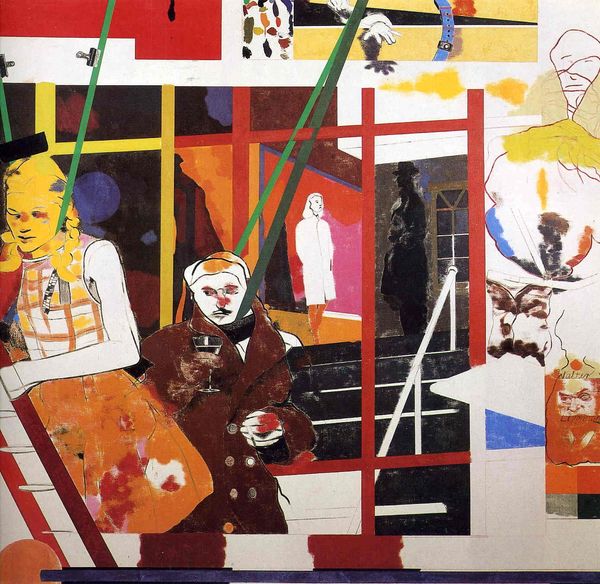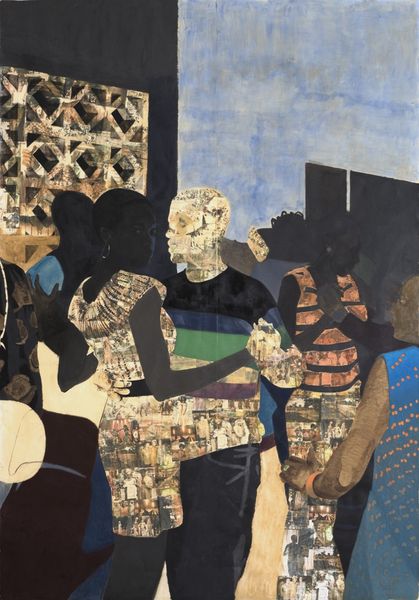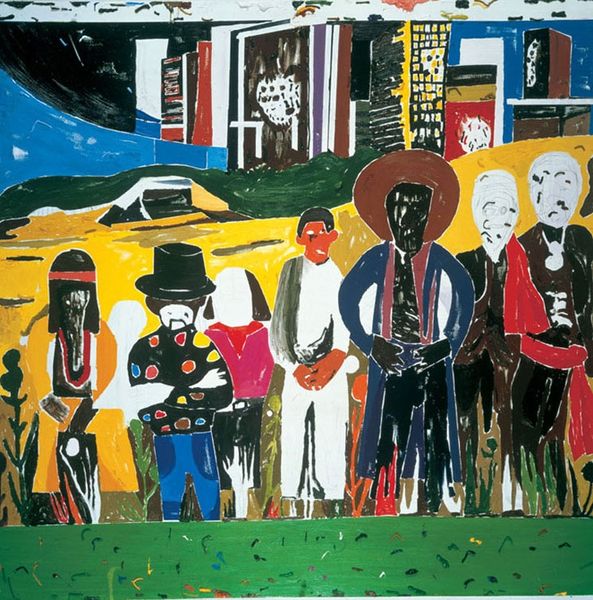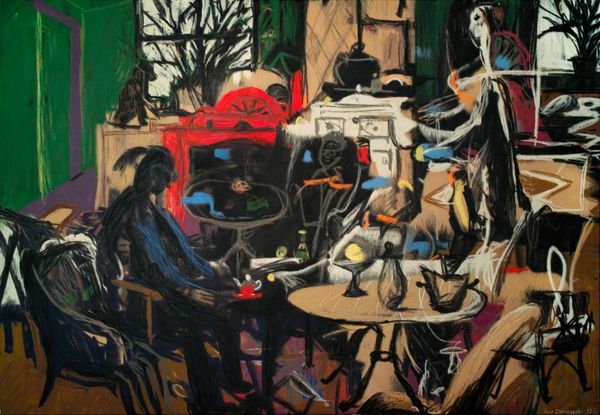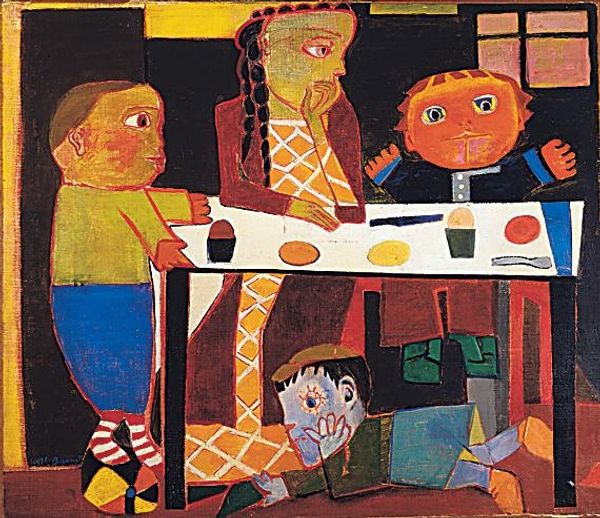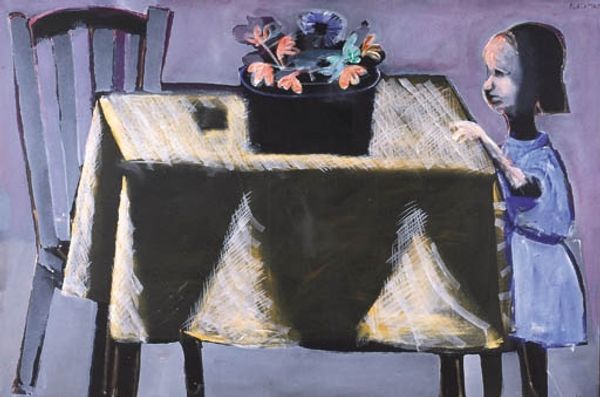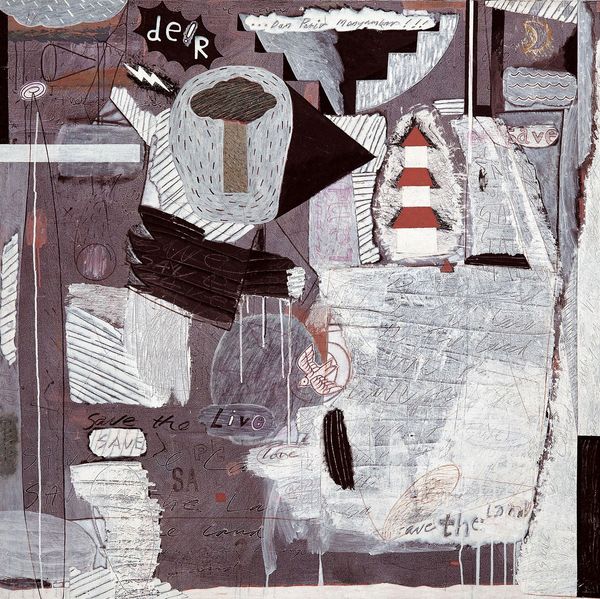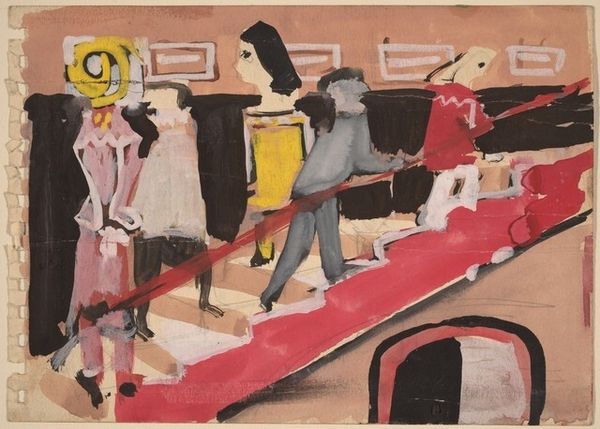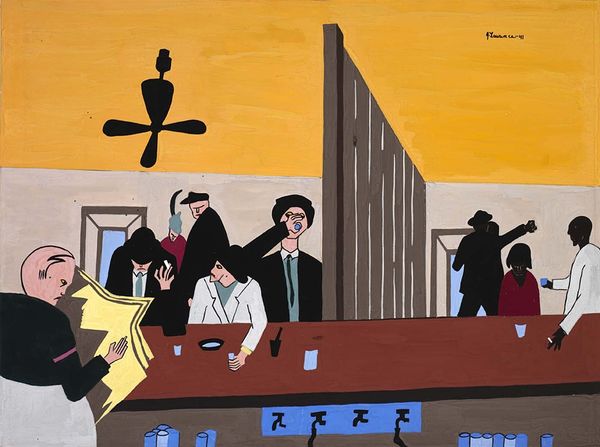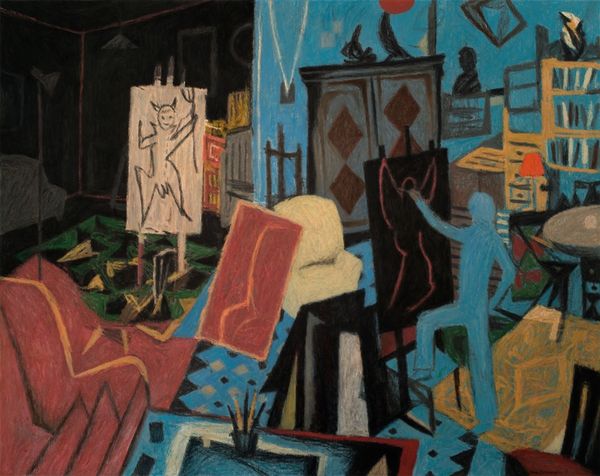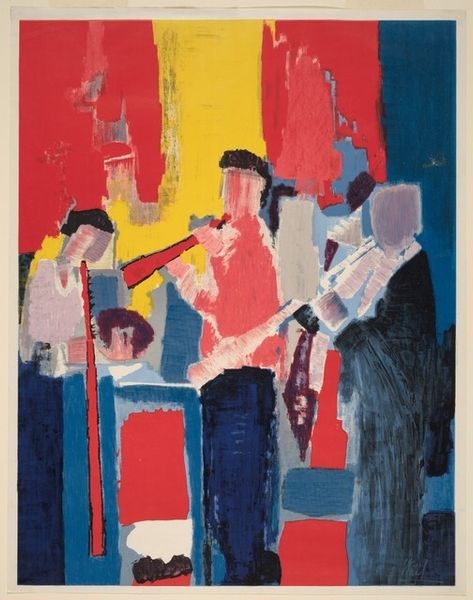
Dimensions: 90.7 x 121.2 cm
Copyright: Sidney Nolan,Fair Use
Curator: Here we have Sidney Nolan's 1947 mixed-media painting, "The Trial," currently housed at the National Gallery of Australia. What are your initial thoughts? Editor: It’s unnerving. The flat planes of color and deliberately crude figures create this oppressive atmosphere. And that checkered floor! It’s visually disorienting. Curator: Indeed. Let’s delve into Nolan’s compositional strategy. The painting employs a flattened perspective, typical of modernism, pushing all elements towards the picture plane. Observe how the geometric forms, particularly the stark rectangle representing Ned Kelly, dominate the space. What might this signify? Editor: Well, from a material perspective, consider what Nolan's using: acrylic paint and mixed media, readily available even in postwar austerity. It makes the point that history, even skewed or distorted history, becomes pervasive—accessible. Kelly looms large because the *idea* of Kelly, and what he represents, became so potent. Curator: Fascinating. And the repetitive figures of the police and the jury members... their almost cartoonish quality reduces them to mere ciphers. Nolan abstracts their humanity, shifting the focus to Kelly. It begs the question, who is truly on trial here? Editor: Right! We should think of the labor involved too, even with acrylics; it implies a repetitive, almost mechanical creation. All of these characters—the judge, the cops—are being produced en masse by the state apparatus, dehumanized within that system. Curator: The layering of paint, too, suggests a build-up of meaning, a palimpsest of historical narrative, open to continual re-interpretation and the materiality becomes expressive of that. The artist gives form to the invisible systems of power at play. Editor: Precisely. So even that red-and-white floor doesn’t feel festive; it feels like a grid trapping everything, solidifying those tensions between individuals and institutions. Curator: A crucial painting which explores the visual and conceptual possibilities of abstract form while subtly questioning historical narratives and modes of production, and leaving us much to contemplate. Editor: Exactly, and showing how even seemingly simple materials, meticulously rendered, can unpack deeply unsettling social truths.
Comments
No comments
Be the first to comment and join the conversation on the ultimate creative platform.
